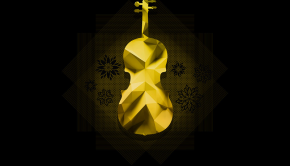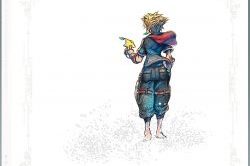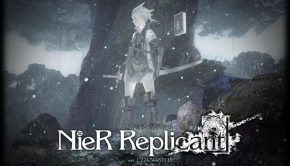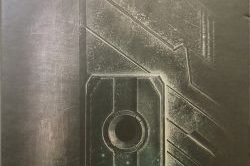Kingsglaive Final Fantasy XV Original Soundtrack
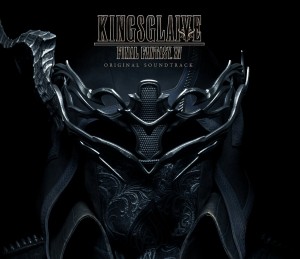 |
Album Title: Kingsglaive Final Fantasy XV Original Soundtrack |
| Record Label: Square Enix Music |
|
| Catalog No.: SQEX-10560~1 |
|
| Release Date: September 7, 2016 |
|
| Purchase: Download on iTunes |
Overview
Kingsglaive, the film prefacing the storyline of Final Fantasy XV, came with its own soundtrack composed by newcomer John Graham with contributions from Yoko Shimomura, who also composed the soundtrack to Final Fantasy XV. The soundtrack is a classic choral/orchestral score, with contributions from the Nashville Music Scoring Orchestra to facilitate the grand scale of the album. Graham, who composed the majority of the score for the film, and it’s worth noting to those who have listened to the music of the upcoming game (and accompanying anime Brotherhood) that the soundtrack to Kingsglaive is very much a standalone soundtrack. While it has a few nods to the series, including a few themes from Final Fantasy XV in a couple of Shimomura’s track and, of course, Uematsu’s Prelude, the bulk of Kingsglaive is its own independent score.
Body
The opening track “Prologue” sets the atmosphere of the score, both in mood and timbre. The track has a very soft approach, opening with piano, high strings, and a women’s chorus that eventually evolves into a sweeping melody with the full range of instruments. The album then quickly picks up the pace with “Under Siege,” an action-packed track with a fast rhythm and a low electronic synth to up the rawness. Interestingly, despite the fact that it is a film track, there is a sense of looping as, with thirty seconds left in the track and after a brief pause, the strings adopt the rhythm of the main theme of the track again and the piece picks up before the end.
After a couple more action tracks, including “Diamond Weapon” (which carries rhythmic elements of “Under Siege”), and “To the Rescue,” the album sees a few new styles. “Somber Return” is a brooding strings-heavy track, and “Calling for Rain” features Neo Liu and Tu Hua Bing in an oddly nineties pop track. It’s strangely out of place on the album; not that a break from the heavy orchestra isn’t welcome, but if the track is meant to be a modern song that the characters listen to, I’m not sure if their musical culture is supposed to be more along the lines of Celtic dance, Bollywood pop, or Backstreet Boys.
“Luna,” one of the highlights of the album, is a shimmering track – unquestionably a Final Fantasy love interest theme, but a beautiful one regardless of how many musical tropes it packs into its form. I loved the use of piano, which tends to showcase some of Shimomura’s trademark writing. On the other hand, “Missing Princess” showcases some of Graham’s best work on the album. The melody is rough and driving, and while it doesn’t clash with the traditional orchestra on the rest of the album, it certainly adds in enough new elements to separate this track from the action tracks of the score so far.
In the second half of the album, the tracks become even more varied. “Our Hope Goes With You” is almost mellow except for a gorgeous melody that carries the listener across currents of strings. “The General and the King” begins with the atonal percussion that has prefaced several of the heavier tracks on the album, and develops accordingly fierce percussion and a brassy motif, but transitions into what is at first a distinct breathy string theme, and then a surprisingly soft section with delicate, clear notes and long chords. Listening to it, I half want to turn up the volume at times to get a better read on the notes, and I’m half afraid to in case the heavy section returns – it never does.
The album closes with a few more sweeping orchestral tracks. “No Turning Back” is a jittery musical battle between the scampering strings and the stomping brass, while “Kings of Lucis” is a more somber and majestic strings piece. “Battle For Crown City,” on the other hand, is one of the more focused and driving tracks of the album, carefully building up the tension of the action it accompanies and tops it off with a full choir, which hasn’t prominently featured on the album since “Prologue.” Finally, Shimomura closes the album with “NYX” and “APOCALYPSIS NOCTIS,” the first of which incorporates the film’s themes one final time, and the latter bringing in themes from the upcoming game. Even without having XV’s themes memorized by heart yet, the combination of wild piano and choir is a giveaway. I loved seeing the album end on this note, teasing a hint of what is yet to come upon the game’s release.
Summary
Overall, the grand scale of the score was effective. There is no question by the end of the album that the aim of the director – and composer – was to create a grand-scale orchestral epic. While some of the thematic content occasionally gets lost in the bombastic instrumentation, the score itself is heartfelt and authentic, and makes for an enjoyable listen. When compared to Advent Children, the score to Kingsglaive is darker and more cinematic, setting a refreshing precedent for any future Final Fantasy films. Kingsglaive is available for digital download on iTunes.
Do you agree with the review and score? Let us know in the comments below!
4
Posted on October 4, 2016 by Emily McMillan. Last modified on October 4, 2016.

